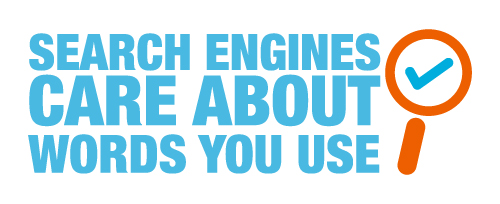Be honest. Do you love or hate Apple’s Siri and Amazon’s Alexa? Do you find these artificial-intelligence, voice-command digital assistants personable, helpful resources? Or wily, always-listening-behind-your-back snitches? Like me, you may consider them a bit of both.
I just returned from a conference in Boulder, Colorado – aptly called Big Boulder – focused on today’s avalanche of artificial intelligence (AI) and machine learning (i.e. the ability to adapt and improve performance without being explicitly programmed). We can either be crushed by it, or climb out and plant on flag on top. Speakers from Facebook, Twitter, IBM Watson, MIT Media Lab, Slack, Dataminr and more encouraged the latter.
Prepare for Change
It will take work. Developing best practices. Addressing privacy and ethical concerns. Building a better consumer experience. Powering data-driven, business value. But the rewards will be great. For one, doing so will help your company survive.

The conference started by thinking big picture. Considering the world we now inhabit. Where every move we make gets captured as data – from stepping on our digital scales in the morning to tossing and turning with our Fitbit at night. Where our days feel increasingly compressed and overwhelmed with information coming at us from all directions.
Big Boulder organizer Chris Moody and Foundry Group partner poked fun at himself, saying that at last year’s conference he passed on the opportunity to meet with the Dalai Lama as he just “didn’t have time.” Now, of course, he’s chagrined by that decision. He cautioned us to learn from his mistake and to not let data keep us from being in the moment.
Replace Guesswork with Data
Data can benefit your brand whether you’re marketing aircraft or motorcycles. The Harvard Business Review just published an article showcasing how a Harley-Davidson dealership in New York used artificial intelligence to increase sales leads by almost 3,000 percent, resulting in a tripling of sales.
The dealership worked with a firm, Adgorithm, that measures then optimizes digital marketing efforts across such platforms as Facebook and Google. A key strategy was to target lookalikes, people resembling current customers. AI helped the dealership broaden its net, find prospective customers and send them strong calls to action. AI can do what a human never could: processing and managing millions of interactions and keywords, testing and modifying creative variations that boost performance, and more accurately predicting outcomes.
Understand Your Audiences
Facebook Audience Insights Partnerships Lead Kunal Merchant spoke about target markets and how to correctly use social data to better understand and connect with people.
To those who worry that we’re being manipulated or otherwise exploited through Facebook’s social data, Merchant said, “We’re using data to create a better user experience, not for evil.”
He stressed that the days of blasting out general content to everyone are long gone. Content must be relevant and timely. When looking at your data to better refine your content strategy, he cautioned to go beyond the surface level, otherwise you may just skim the noise. Dig deeper.

“Everything is about data and driven by data,” Merchant said. When an audience member asked what possible data Facebook might not have access to, Merchant quipped, “Twitter data.”
One thing Facebook currently does not allow: “Right now you cannot target people based on conversation.” That ought to cause some folks to breathe easier.
In his work with business clients to align with and help achieve goals, Merchant said, “Our philosophy is not to give you everything, but to give you what you need.”
 Right: Kunal Merchant, Facebook audience insights partnerships lead
Right: Kunal Merchant, Facebook audience insights partnerships lead
Get Smart with Cognitive Solutions
IBM Watson AI General Manager Beth T. Smith started her career 30 years ago as a programmer. Now she heads IBM’s flagship cognitive system, which runs on the cloud and serves a global ecosystem of partners and developers. Smith says she’s seeing a change in the conversations she’s having: talking increasingly to high-level executives, not just IT. It’s all part of a shift to a cognitive era, she said, versus the programmable one we’ve been in.
Smith sees conversational chat bots as a big piece of the new engagement spectrum. She believes technology, used correctly, can impact the greater good, particularly in the areas of health and safety.
“Maybe think about APIs (application programming interfaces, or tools for building application software) like Blue Apron,” Smith said. “Ingredients ready for you to put in the oven.”
 Right: Beth Smith, IBM Watson AI general manager
Right: Beth Smith, IBM Watson AI general manager
Learn from the Pros
All of the Big Boulder speakers impressed me, but none more than cognitive scientist Deb Roy, who now serves as Twitter’s chief media scientist and director of MIT Media Lab’s Laboratory for Social Machines. Some of you may have viewed his now-famous 2011 TED talk, Birth of a Word, which used data-rich research to highlight how we learn. Today, he helps deep-learning networks translate the Twitter firehose into a refined stream.
Roy addressed the changing interplay between news, government and society. He used the 2016 U.S. presidential election as a most-relevant case study. He pulled up slides to shed insights. A key element he highlighted on a map is that 80 percent of journalists live in three major cities. Rural America caught them unaware.
He showed how a better analysis of social media could have made the outcome less shocking. “There’s a hunger to figure out what the hell happened,” Roy said. “There’s an appetite to understand the other side.” He then pulled up FlipFeed, which drops you into someone else’s real Twitter feed. This gives you a (possibly radically) different view of the Twitterverse, be it liberal or conservative or somewhere in-between.
Roy said we need to look at who’s setting the agenda, filter bubbles and separation of networks. “America has self-sorted,” he said. When studying groups, or tribes as he called them, look at their lexicon. He showed that the blue (liberal) tribe in the last election hardly used the word “legals,” for instance, but the red (conservative) tribe did heavily.
 Deb Roy, Twitter chief media scientist and MIT Media Lab director
Deb Roy, Twitter chief media scientist and MIT Media Lab director
Harness Social Data for Social Good
While most of the conversations swirled around commercial applications, several speakers expanded our thinking about humanitarian efforts, social justice and security. Daniel Pedraza from the UN Global Pulse shared his belief that big data can accomplish big good. Toward that end, his organization serves as a convener bringing together industry leaders like Facebook and Twitter to wrangle with such pressing issues as data access versus privacy. He hopes, he said, to make the UN Global Pulse more fleet footed in its efforts to protect those most at risk.
Dr. Safiya Umoja Noble from UCLA spoke about social justice and urged caution regarding the unintended consequences of datamining. Her soon-to-publish book, Algorithms of Oppression: How Search Engines Reinforce Racism, hooks you with its cover. It shows the results of predictive search with the search field “why are black women so…” followed by search suggestions “so angry, so loud, so mean, so lazy, so annoying…” She seemed less encouraged than other panelists that data would lead us to a better place, noting that sharing atrocities on social media doesn’t seem to be lessening the severity or number of these incidents.
“Virality is the name of the game,” Noble said. “What does it mean when ads are sold next to a video of a man being choked to death by police? … We’re complicit.”
“Mark my words,” she said, “artificial intelligence will become a human rights issue in the 21st century.” Noble also spoke to the value of forgetting, saying it’s why we seal juvenile records. What happens when nothing can ever be forgotten, when there’s a permanent digital record?
 Right: Dr. Safiya Umoja Noble, UCLA Department of Information Studies assistant professor
Right: Dr. Safiya Umoja Noble, UCLA Department of Information Studies assistant professor
Don’t Worry About Government Social-Data Use (or Do)
Andrew Hallman, digital innovation deputy director for the U.S. Central Intelligence Agency (CIA), got laughs by saying that advertisers know more about U.S. citizens than the CIA does. Concerning the CIA’s level of intelligence, he said, “If you’re not a bad guy, don’t worry about it. If you’re a bad guy, worry about it.”
Hallman admitted that the CIA isn’t where it needs to be in integrating digital and cyber capabilities across all the agency’s mission areas and applying machine learning to its ability to forecast threats and events, “but we’re getting better.”
 Right: Andrew Hallman, CIA digital innovation deputy director
Right: Andrew Hallman, CIA digital innovation deputy director
Listen to Images, Too

Social listening also extends to the visual. Netra CEO Richard Lee said our eyes used to be the window to our soul, but now it’s what we chose to photograph and share on social media. As a result, the camera’s replacing the keyboard for communication. AI can search those visuals (and voice) as well as text.
Noam Cadouri, Reddit business development manager, shared his thoughts about the platform’s “pseudonymity,” being able to preserve anonymity to express your true views (i.e. without them being linked to your name). He announced at the convention that Reddit would be making its data available to the marketplace. That’s meaningful considering Reddit hosts more than 100,000 active communities.
 Richard Lee, Netra CEO
Richard Lee, Netra CEO
Don’t Confuse Simple with Simplistic
A finance panel with executives from StockTwits, Morgan Stanley Research and System2 had a far-ranging discussion about data-driven investing. On the downside there were complaints about exorbitant fees for data purchasing and the difficulty of obtaining transparent data from China and other emerging markets and how valuable that data is, particularly for mobile behavior.
On the upside, panelists applauded the ability to create beautiful, bespoke data sets from simple, standardized platforms. System2 founder Matei Zatreanu cautioned us to always look at the qualitative value of the data and ask, “Can I trust it?” Pierce Crosby, StockTwits director of business development, said, “Insights is the biggest rat race right now.”
Make Instagram Work for Your Brand
Instagram Director of Product Management Vishal Shah helps connect Instagram’s loyal enthusiasts to marketers and businesses.
“We ask, ‘What are people doing organically and what tools can we built to support that?’” he said.
While Instagram works with businesses of all sizes, Shah noted Instagram’s increasingly supporting larger marketers.
 Right: Vishal Shah, Instagram director of product management
Right: Vishal Shah, Instagram director of product management
Use Social Data to Make Better Decisions
A corporate panel with representatives from Nestle, MGM International Resorts and The Coca-Cola Company talked about decision making during this period of digital transformation. They lamented a dependence on third-party data.
“It feels like driving the car forward looking through the rearview mirror,” said Gloria DeCoste, Nestle USA head of digital strategy.
All talked about the goal of seamless, targeted consumer experiences. Beverly Jackson, MGM International Resorts VP of social portfolio strategy, said they’re testing different gaming environments for those highly social Millennials. They don’t want to just sit alone at a slot machine. They want to game collectively with their friends.
“My dirty-dirty,” said Jackson, “is getting people out of their silos and thinking enterprisewide.”
Understand Twitter’s Changing Role
Joel Lunenfeld, Twitter vice president of global brand and creative strategy, uses his degree in anthropology to understand culture first and marketing second. He spoke to the shift in the web today.
“People used to hunt for content,” Lunenfeld said. “Content is hunting us right now.”
Twitter has evolved from a social platform to a cultural operating system and a news platform, Lunenfeld said. Why is so much of that negative?
“There’s always been more good than evil in the world,” Lugenfeld said, “but evil’s had a bigger marketing budget.”
He doesn’t see Twitter going away any time soon: “It will outlive us all.”
 Right: Joel Lunenfeld, Twitter VP global brand and creative strategy
Right: Joel Lunenfeld, Twitter VP global brand and creative strategy
Employ Influencer Marketing Cautiously
Insightpool CEO and self-professed serial entrepreneur Devon Wijesinghe offers a software as a service (SaaS) platform for influencer marketing at scale. He said, “We live in an age where we love to buy, but hate to be sold.”
Wijesinghe used the recent Fyre Festival organized by rapper Ja Rule as a case study of what not to do when working with celebrity influencers. Long-term brand relationships and shared values work, he said. Just getting paid to post about something you may know nothing about erodes trust.
“You can’t just peddle your influence with no authenticity,” Wijesinghe said. “That’s fraud.”
 Right: Devon Wijesinghe, Insightpool CEO
Right: Devon Wijesinghe, Insightpool CEO
Don’t Let Bots Undermine Your Brand
Geek Squad founder Robert Stephens kept the crowd laughing throughout his mostly irreverent comments. Here are a few of his quips:
- “AI should be called EI, eventual intelligence.”
- “I’m pretty sure no call has EVER been recorded for quality purposes.”
- “The only reason people complain about brands on Twitter is because brands aren’t listening.”
- “Companies take, take, take. They should offer to let you track survey results like a FedEx package.”
Stephens understands the value bots deliver, but he doesn’t see them as a silver bullet that slays bad customer experiences. In fact, he says with things the way they are today, chief digital officers need to hide and keep their heads down.
“The reason bots suck right now,” he said, “engineers are designing them.”
It doesn’t matter if a company cares about bots, Stephens said, but it better care about something. The role of a brand is a personality and what the brand stands for. “It’s more than an API.”
 Right: Robert Stephens, Geek Squad founder
Right: Robert Stephens, Geek Squad founder
Make Things Better with Bots
Amir Shevat, Slack director of developer relations and author of the newly released book Designing Bots, has seen the light and wants us to join the revolution in software interaction. He promotes useful bots that boost productivity – and hopes people consider Slack one.
Shevat’s all about creating conversational experiences, which entails developing bot personalities – gender, attitude and personality. Brands with opt-in bots that connect to users leads to high engagement and customer satisfaction, Shevat said.
While a big bot believer, Shevat cautions us humans to maintain our objectivity. “Data can be tortured to say anything,” he said.
 Right: Amir Shevat, Slack director of developer relations
Right: Amir Shevat, Slack director of developer relations
Define Where Bots Stop and People Start
We’ve all had frustrating experiences on the phone where you never have the chance to talk to a human and a bot keeps asking you to choose from choices – none of which include what you want to do. Those experiences should become fewer and fewer, according to panelists representing ListenFirst Media, Converseon, Conversocial and Twizoo.
 Panelists left to right: Jonathan Farb, ListenFirst Media chief product officer; Joshua March, Conversocial CEO; Madeline Parra, Twizoo CEO; Rob Key, Converseon CEO
Panelists left to right: Jonathan Farb, ListenFirst Media chief product officer; Joshua March, Conversocial CEO; Madeline Parra, Twizoo CEO; Rob Key, Converseon CEO

They urged businesses to err on the side of caution with AI and to hand off bot interactions to a human or moderated process when needed. But they also noted human interaction ought to become less needed as AI is now approaching human-level precision in understanding. AI is learning nuance and how to resolve more complex issues. In the past, bots correctly picked up on sentiment only about 20 percent of the time. Today that’s more like 80 percent.
Imagine the possibilities. Reaching out and having the bot on the other end know you. Not having to repeat yourself endlessly or give a confirmation number yet again. Sounds heavenly.
A big takeaway from the conference is that everything is very much in flux. Winners in the listening space will no doubt consolidate and emerge. Everyone’s working to make their products cheaper and easier to use. Companies – both small and large – don’t have the time or resources for a lot of gobbledygook, so analytics products need to deliver clearly and concisely. Bots need to mimic human interaction as much as possible and to seamlessly communicate with other systems. We want faster responses and improved efficiencies. The good news: they’re on the way.
This column ran in the June 15th issue of BlueSky Business Aviation News.











 Right: Kunal Merchant, Facebook audience insights partnerships lead
Right: Kunal Merchant, Facebook audience insights partnerships lead Right: Beth Smith, IBM Watson AI general manager
Right: Beth Smith, IBM Watson AI general manager Deb Roy, Twitter chief media scientist and MIT Media Lab director
Deb Roy, Twitter chief media scientist and MIT Media Lab director Right: Dr. Safiya Umoja Noble, UCLA Department of Information Studies assistant professor
Right: Dr. Safiya Umoja Noble, UCLA Department of Information Studies assistant professor Right: Andrew Hallman, CIA digital innovation deputy director
Right: Andrew Hallman, CIA digital innovation deputy director
 Richard Lee, Netra CEO
Richard Lee, Netra CEO Right: Vishal Shah, Instagram director of product management
Right: Vishal Shah, Instagram director of product management Right: Joel Lunenfeld, Twitter VP global brand and creative strategy
Right: Joel Lunenfeld, Twitter VP global brand and creative strategy Right: Devon Wijesinghe, Insightpool CEO
Right: Devon Wijesinghe, Insightpool CEO Right: Robert Stephens, Geek Squad founder
Right: Robert Stephens, Geek Squad founder Right: Amir Shevat, Slack director of developer relations
Right: Amir Shevat, Slack director of developer relations Panelists left to right: Jonathan Farb, ListenFirst Media chief product officer; Joshua March, Conversocial CEO; Madeline Parra, Twizoo CEO; Rob Key, Converseon CEO
Panelists left to right: Jonathan Farb, ListenFirst Media chief product officer; Joshua March, Conversocial CEO; Madeline Parra, Twizoo CEO; Rob Key, Converseon CEO